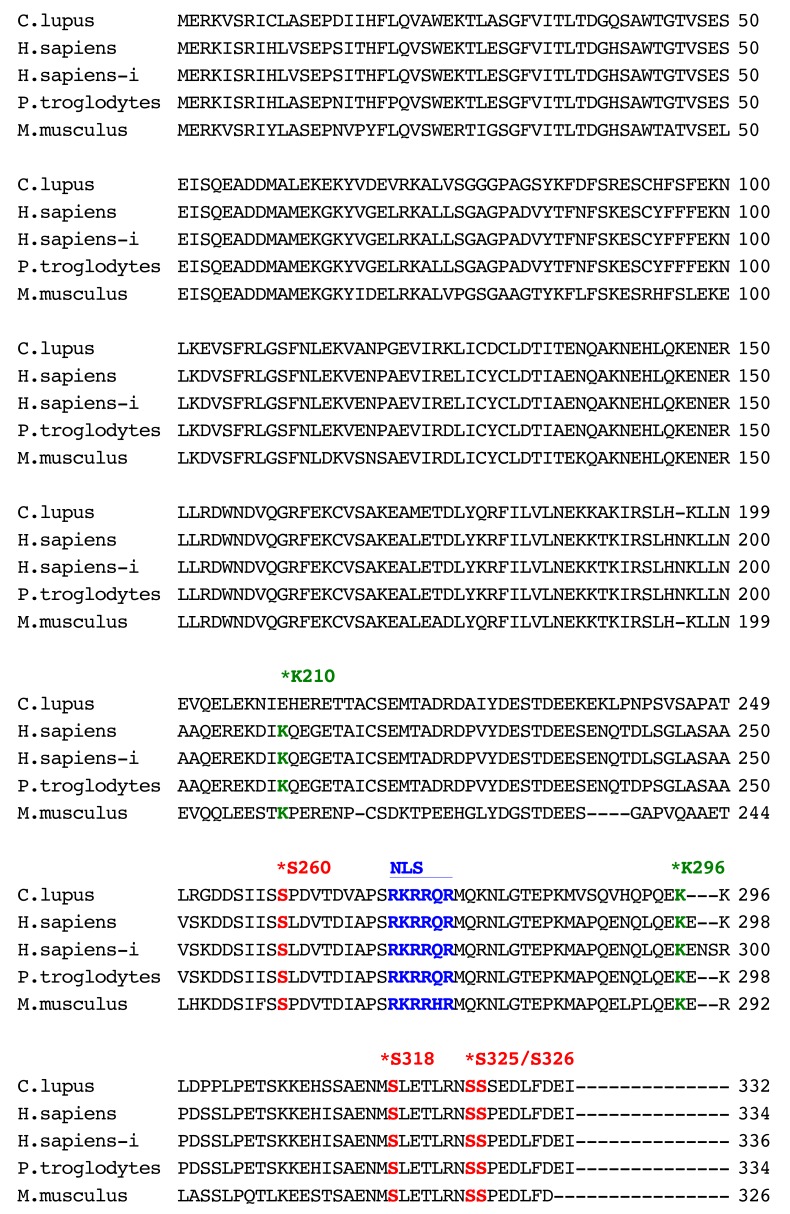Fig. 2.
Amino acid sequences of XRCC4 from canine (Canis lupus familiaris, GenBank accession number: LC168634), human (Homo sapiens, GenBank accession number: AAC50339.1), human isoform (H.sapience-i) (Homo sapiens, GenBank accession number: NP_071801.1), chimpanzee (Pan troglodytes, GenBank accession number: XP_001148110.2) and mouse (Mus musculus, GenBank accession number: NP_082288.1) species. The location of a putative nuclear localization signal (NLS) sequence in human XRCC4 [21]. Stars mark the location of the SUMO modification site (K210), polyubiquitylation site (K296) and DNA-PK phosphorylation sites (S260, S318, S325 and S326) in the human sequences (AAC50339.1)) [20, 32, 34].

